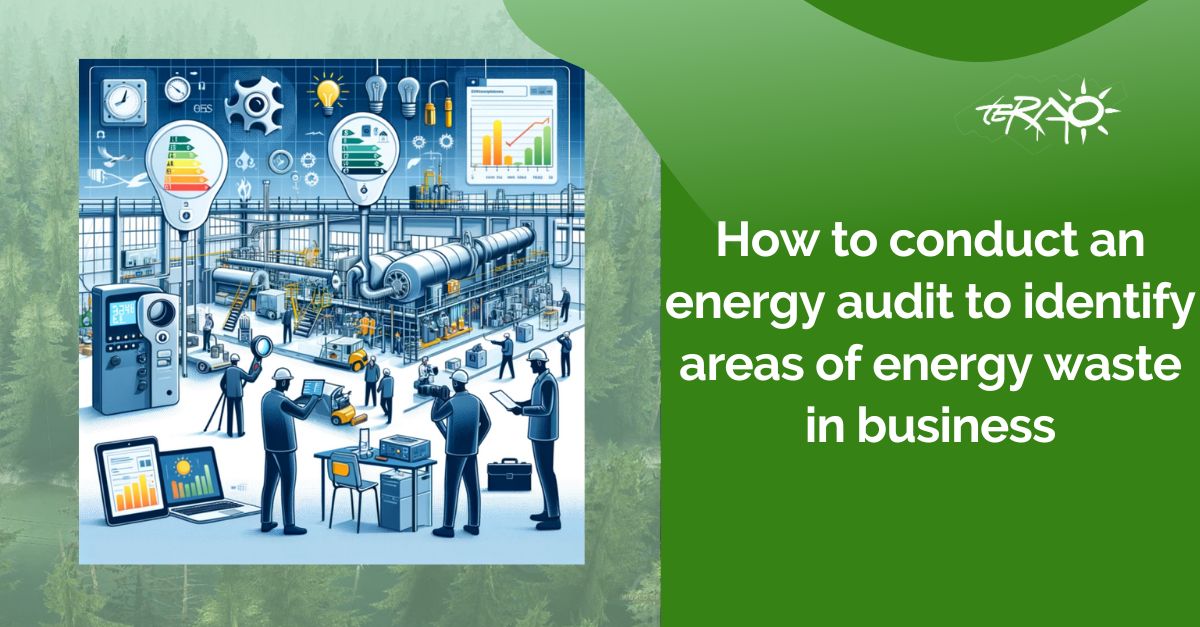An energy audit is a comprehensive evaluation of the energy consumption and performance of your business. It involves collecting and analyzing data on your energy use patterns, such as how much electricity, gas, or other fuels you use, when and where you use them, and for what purposes. It also involves inspecting your building envelope, lighting, heating, ventilation, air conditioning (HVAC), appliances, equipment, and processes to identify any inefficiencies or malfunctions causing unnecessary energy waste.
The main objectives of an energy audit are to:
- Establish a baseline of your current energy use and performance
- Identify the areas of energy waste and inefficiency
- Estimate the potential energy savings and payback periods for each improvement opportunity
- Provide recommendations on how to reduce your energy consumption and costs
- Develop an action plan to implement the recommended measures
An energy audit is important for businesses because it can help:
– Understand current energy use and performance. An energy audit gives you a clear picture of how much energy you use, when you use it, and where you use it. It also helps you to benchmark your energy performance against similar businesses or industry standards.

– Identify the sources of energy waste and inefficiency. An energy audit reveals the areas where you are losing or wasting energy due to poor design, maintenance, operation, or behavior. It also helps you detect any faults or defects affecting your energy performance or safety.
– Quantify the potential savings and benefits. An energy audit estimates how much energy and money you can save by implementing various measures to improve your energy efficiency. It also calculates the payback period, return on investment, and environmental impact of each measure.
– Prioritize the most cost-effective measures. An energy audit helps you to rank the measures according to their feasibility, cost-effectiveness, and impact. It also helps you to plan and budget for the implementation of the measures.
How to Conduct an Energy Audit for Your Business
The first step is to collect data on the current energy consumption and costs of the business by reviewing utility bills, meter readings, invoices, and contracts. The data should cover at least one year of operation and include information on the type, quantity, price, and quality of energy sources used. The data should also be disaggregated by different departments, processes, equipment, and periods.

The second step is to analyze the data and identify the major energy users and areas of energy waste by using various tools and methods, such as benchmarking, energy balance, load profile, power factor, energy intensity, and specific energy consumption. The analysis should reveal how much energy is used for different purposes, how efficiently it is used, and how it varies over time. The analysis should also identify any anomalies, inefficiencies, or malfunctions that cause unnecessary energy losses.
The third step is to evaluate the potential for energy savings and propose measures to achieve them by using various techniques, such as payback period, net present value, internal rate of return, and life cycle cost analysis. The evaluation should consider the technical feasibility, economic viability, environmental impact, and social acceptability of the proposed measures. The evaluation should also prioritize the measures according to their cost-effectiveness and ease of implementation.
The fourth step is to prepare a report that summarizes the findings and recommendations of the audit. It should include the following elements:
- An executive summary that highlights the main results and conclusions of the audit
- A description of the scope, objectives, methodology, and limitations of the audit
- A presentation of the data collection and analysis methods and results
- A list of the proposed measures with their expected benefits, costs, and payback periods
- A plan for implementing the measures with a timeline, budget, and responsibilities
- A monitoring and evaluation framework for measuring the performance and impact of the measures
The fifth step is to implement the measures and monitor their results. This can be done by following the plan prepared in the previous step and using the monitoring and evaluation framework to track the progress and outcomes of the measures. The implementation should involve all the relevant stakeholders, such as management, staff, customers, suppliers, contractors, regulators, and financiers. The implementation should also include regular feedback loops and adjustments to ensure that the measures are effective and sustainable.
Summary
Conducting an energy audit is a valuable exercise that can help you identify areas of energy waste in your business and implement measures to improve your energy efficiency. An energy audit can help you save money, improve your operational performance, and enhance your reputation as a green business.
If you are interested in conducting an energy audit for your business, you can contact us for more information and assistance at glemoinescelles@teraoasia.com. We are experts in energy management and can help you conduct a professional and comprehensive energy audit that will suit your needs and goals.
Explore more:



![[Case Study]Boosting Productivity and Safety Through Optimized Factory Comfort](https://teraoasia.com/wp-content/uploads/2025/09/Cover-photo-150x150.png)
One Comment
Thank you very much for your insightful and helpful read.